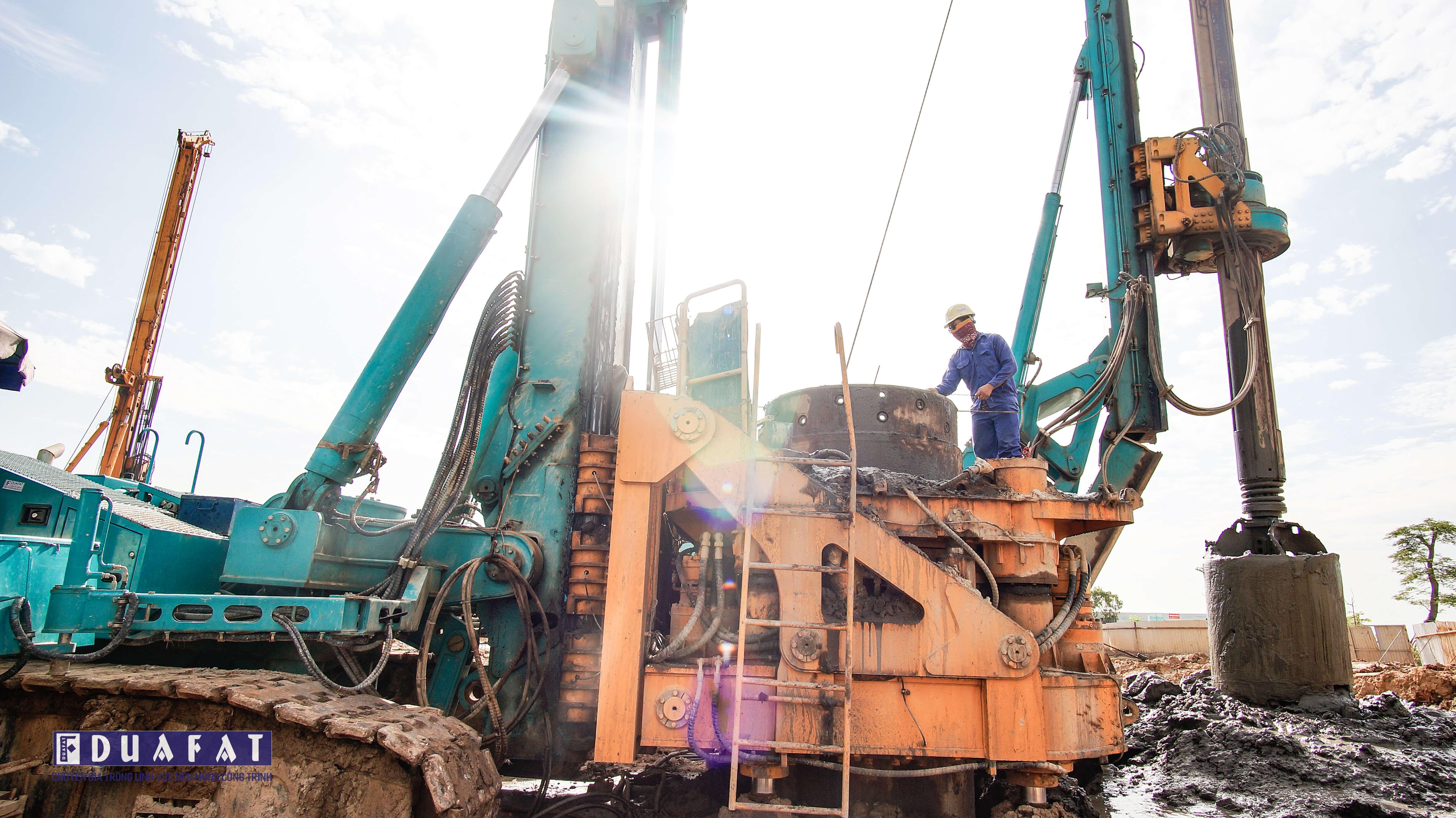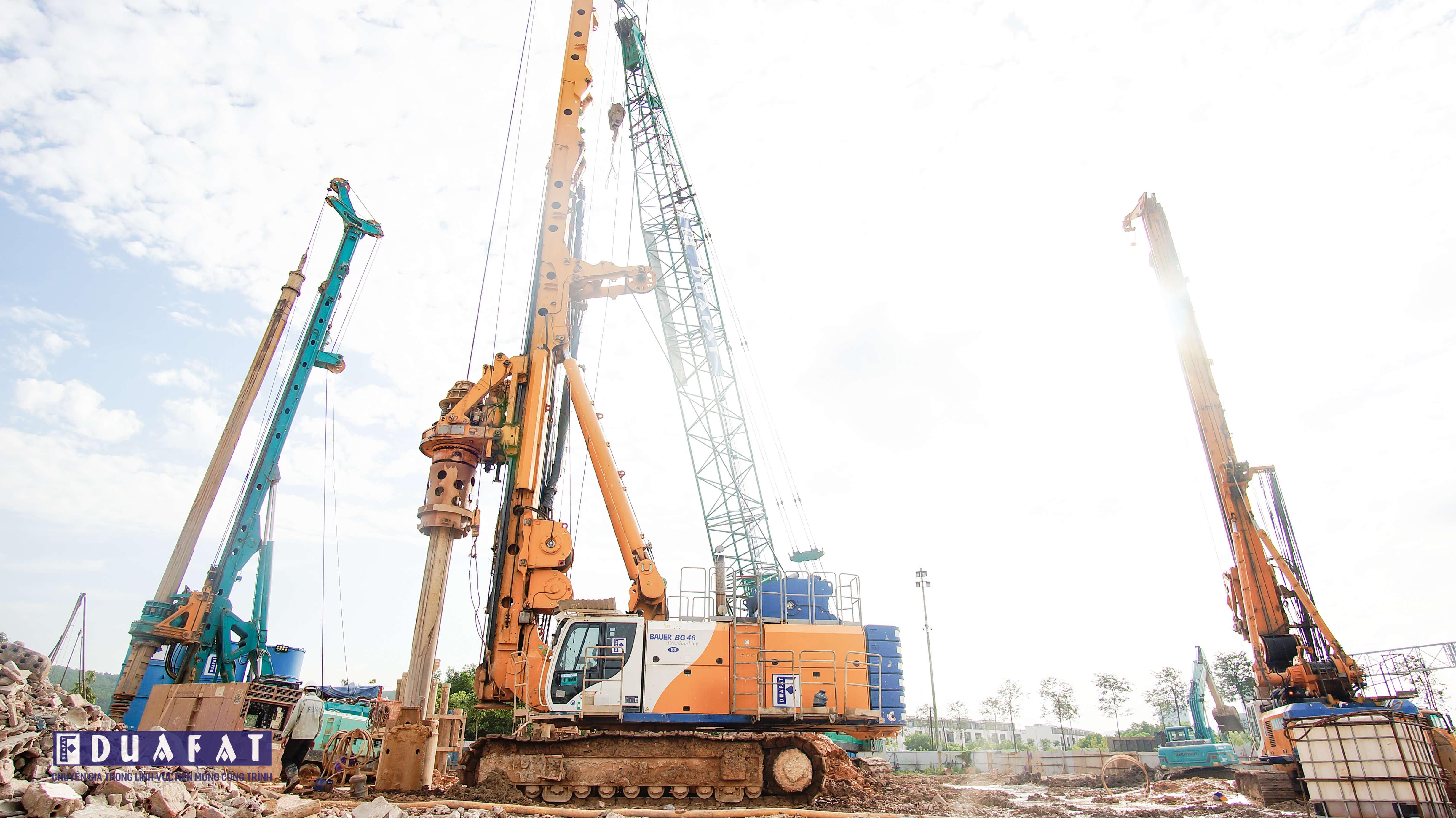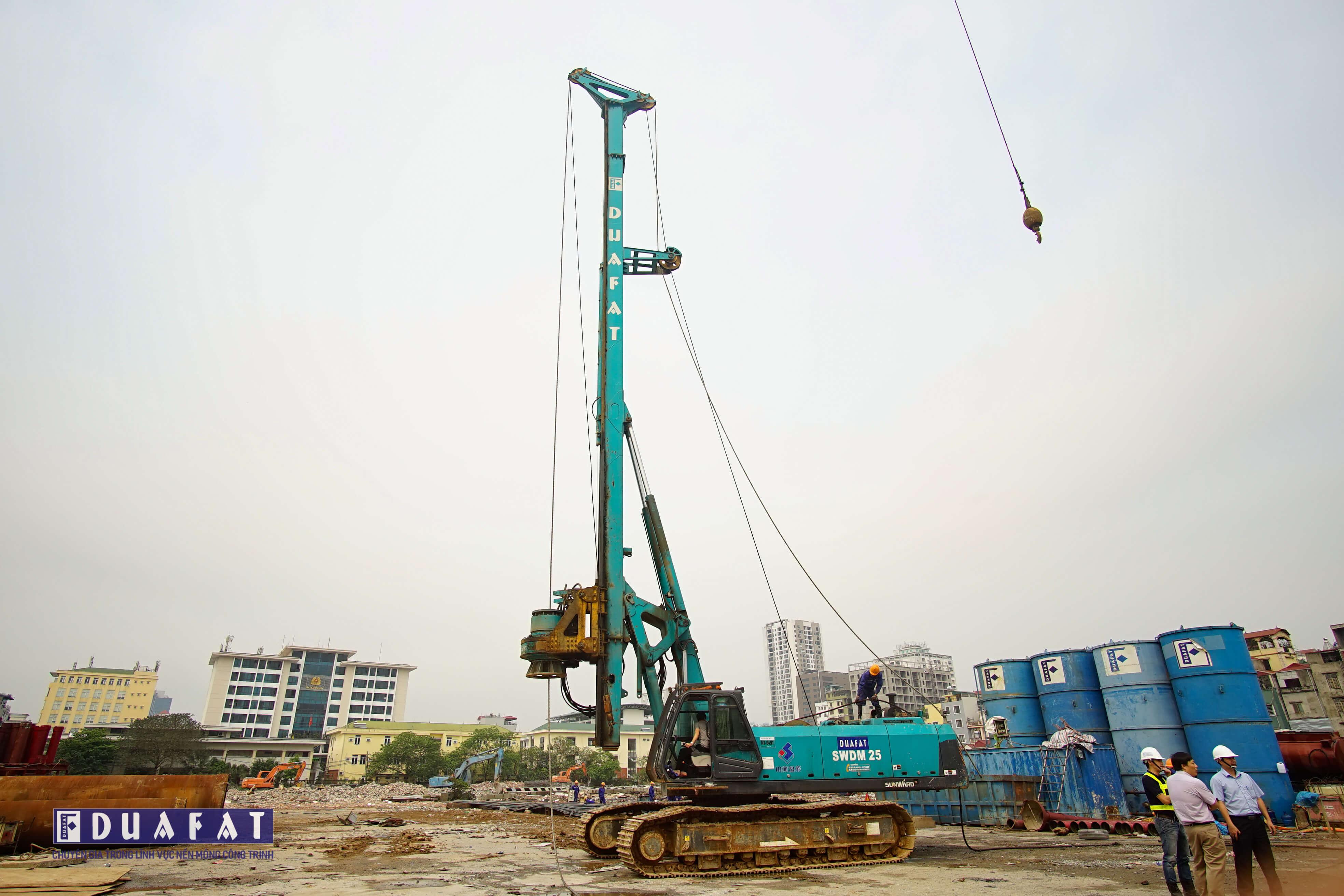Bored pile drilling is the construction foundation plan that not new for projects with weak ground. It is essential to be aware of the scope of application, characteristics, and safety so that it is essential to resolve the problem quickly. With over 10 years of experience in implementing and executing large projects, DUAFAT is confident to always bring customers peace of mind in each Project that we have the opportunity to deploy.
Here are some of the expertise and expertise of the RAC FAT team of Experts on the most common problems when drilling bored pile and processing solution:
1.  Problem on not be able to withdraw drill-up
Problem on not be able to withdraw drill-up
Cause: Due to a power outage, a crane failure… interrupting the drilling process, need to unplug the drill head right after the power failure, the drill bit stuck at the bottom of the hole can not lift nor spit it.
Solution:
- Method 1: Draw the wall tube about 20 cm before withdrawing the drill bit. After pulling the drill head up, the tube wall will be lowered immediately.
- Method 2: If it is impossible to remove the wall tube due to the wall pipe’s depth, great friction force, we must use an erosion method.
Procedure:
Using a high-pressure hose, remove the collapsed soil and push it deep below the drill head to move the drill head down vertically so as not to tilt into the wall. Then withdraw the drill head.
* Note: During the suction process, keep the water level in the bore stable in the wall tube to keep the bored pile at the bottom of the wall.
2. Rebar reinforcement incident when pouring concrete
Cause: Due to the influence of the process of draining the wall
- The tube wall is distorted, convex and concave
- The distance between the outside diameter of the reinforcing frame and the inner wall of the pipe wall is too small
- The reinforced steel frame is bent, and the wall tube is inclined
Solution:
When starting to pour concrete, the reinforced rebar must be detected immediately to stop pouring concrete and patiently shake the wall pipe, move it up and down or rotate in one direction to sever the problems between the reinforced frame. Steel and pipe wall. While pouring concrete, or when draining the pipe and simultaneously reinforcing steel and concrete, this is a severe incident: either the pile shaft and the soil layer are not tightly connected, or there is a significant gaping. Therefore, this case must not be drawn again before reinforcing the submerged ground.
3. Incident of Borehole wall collapsed
3.1 Main cause:
The main causes are in a static state:
- The length of the upper geological layer wall tube is not sufficient through complex geological layers.
- We are maintaining insufficient fluid column pressure.
- The groundwater level has relatively high pressure.
- There is water, or without water in the gravelly pebbles layer, there is a loss of solution in the hole.
- The density and concentration of the solution are not sufficient.
- Inadequate use of holding solution.
- Due to the high speed of hole making, it is not possible to form a membrane of fluid inside the hole.
The main causes are in a dynamic state:
- The wall tube is suddenly deformed or the shape is not suitable.
- The wall pipes are bent, when adjusted to cause the soil to expand.
- Using a jig in hammer form, when digging or shoveling gravel at the bottom of a pipe wall, the surrounding soil will expand.
- When the table is directly placed on the holder, it reduces the adhesive force between the wall tube and the soil layer due to vibration or rotation.
- When lowering the steel frame, hitting the wall of the pit breaks the membrane or the hole.
- Excessive waiting time for pouring concrete (usually no more than 24 h) causes the water holding solution to separate from the water, resulting in an unsatisfactory density in the upper portion of the wall, which causes the wall to collapse.
- There is also an essential reason for the application of drilling technology which is not suitable for the geological layer.
- When installing the wall pipe, pay attention to the verticalness of the pipe holder.
- Strict solution management in the counter-cyclical construction method.
- When pressure groundwater appears, it is best to lower the wall of tube through the aquifer. When making holes, if encountering gravelly pebbles which cause leakage of many liquids, they must stop to consider whether to continue handling or changing the plan. Therefore, the initial geological survey is very important.
- Maintaining the prescribed drilling speed prevents the speed of making holes so fast that the fluid film has not yet formed on the hole walls so it is easy to collapse.
- It is necessary to regularly check the solution while waiting for concrete pouring to have timely treatment solution to avoid the solution being deposited, causing water to collapse.
- When making holes with reels, in order to prevent the cone from turning up and down causing landslides to form a hole, it must be manipulated with an appropriate speed up and down and to adjust the outer wall of the cone with the outer edge. of the cutting knife for a suitable distance.
- When dropping rebar, care should be taken to avoid a strong impact on the reinforcement of the wall. After dropping the reinforced frame, it is required to clear the eroded sand, often using the water spray method, then using the air here method, sand pumping, etc. to suck up the mixed mud, now It must be noted that the pressure water pump must not be too strong to avoid making the borehole more damaged.
- When making holes with reels, in order to prevent the swiveling head from slipping down to make a hole into the hole, it must be manipulated at an appropriate rate of up and down and to adjust the outer wall of the rotating head with the outer edge. of the cutter for a suitable distance.
- When dropping rebar, care should be taken to avoid a strong impact on the reinforcement of the wall. After dropping the reinforced frame, it is required to clear the eroded sand …
Summary: Communication Department


 VN
VN CN
CN KR
KR JP
JP

